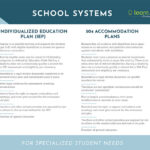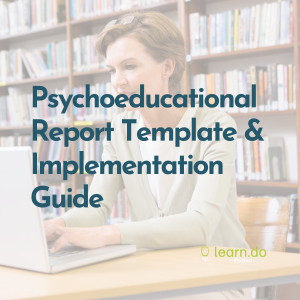When it comes to individualized education plans (IEP) and 504 plans, there are a few key differences that parents and educators should be aware of. This tool will help you understand the difference between both plans, decide what plan may be best for students, and help students better understand their own IEP or 504 plan.
Tools and Resources
- Home
- Assessment
- 504 vs IEP
Related products
-
Dyslexia Overview and Evaluation Tips *with bonus sample report*$30.00 Add to cart
How can the Dyslexia Overview and Evaluation Tips and Sample Dyslexia Report be used?
As a guide to assist in knowing when and how to assess for dyslexia
As…How can the Dyslexia Overview and Evaluation Tips and Sample Dyslexia Report be used?
- As a guide to assist in knowing when and how to assess for dyslexia
- As a tool to clarify the different dyslexia subtypes
- As a reference list of assessments that help identify dyslexia
- As an example of an evaluation report that comprehensively assesses dyslexia and its associated areas and communicates those results clearly
-
SLD Terms and Resources: CHC Theory$15.00 Add to cart
SLD Terms and Resources: CHC Theory
How can CHC Theory be used?Assist educators in understanding the technical language used in psychoeducational reports, and guide them on how to use…
SLD Terms and Resources: CHC Theory
How can CHC Theory be used?
- Assist educators in understanding the technical language used in psychoeducational reports, and guide them on how to use assessment results to build successful IEP plans
- Identify useful accommodations or supports for students struggling in one or more areas of cognitive functioning
-
Psychoeducational Report Template and Implementation Guide$50.00 Add to cart
Psychoeducational Report Template and Implementation Guide
How can the template and guide be used?As a structured framework to streamline the report-writing process, ensuring reports are clear, comprehensive, and strengths-based
…Psychoeducational Report Template and Implementation Guide
How can the template and guide be used?
- As a structured framework to streamline the report-writing process, ensuring reports are clear, comprehensive, and strengths-based
- To increase efficiency while maintaining professional flexibility and individualized analysis
- To promote consistency across students and settings, supporting clear communication of assessment results, functional implications, and recommendations
- As a step-by-step resource to clarify what information should be included in each section and maintain a student-centered, strengths-based approach
- To help school psychologists efficiently translate assessment data into actionable insights while preserving professional judgment
- To increase clarity, consistency, and impact in psychoeducational reports
-
Positive Behavior Supports$15.00 Add to cart
Positive Behavior Charts
How can Positive Behavior Charts be used?Quickly create a positive behavior chart for students in any grade
Utilize as a tool in consultation with teachersPositive Behavior Charts
How can Positive Behavior Charts be used?
- Quickly create a positive behavior chart for students in any grade
- Utilize as a tool in consultation with teachers








Reviews
There are no reviews yet.